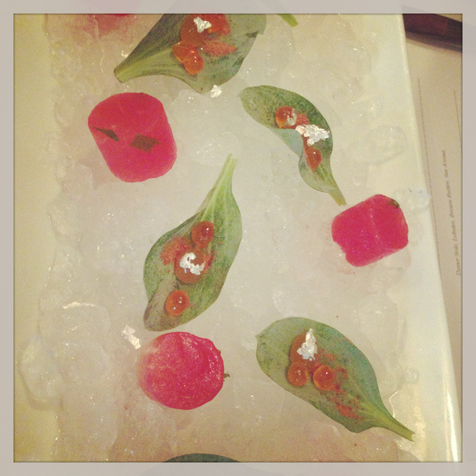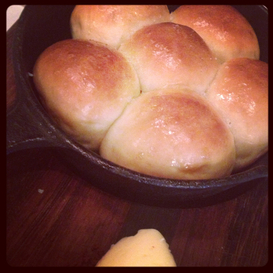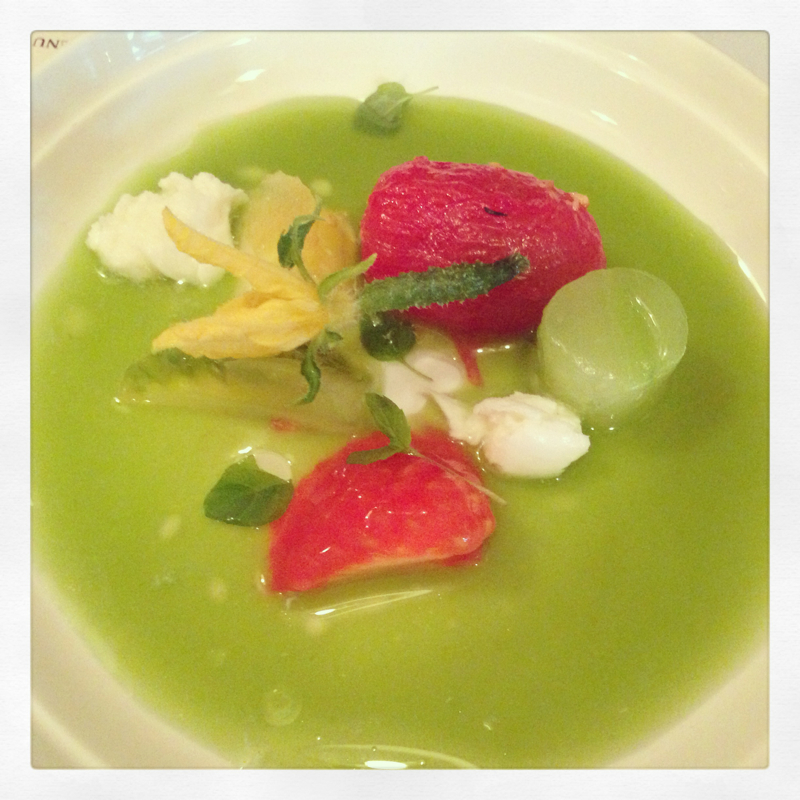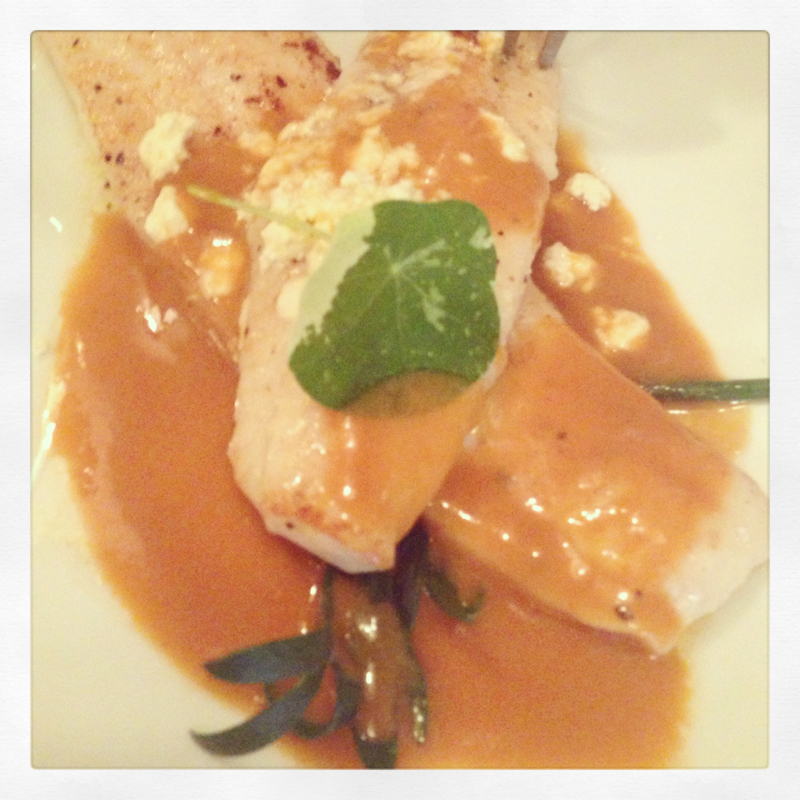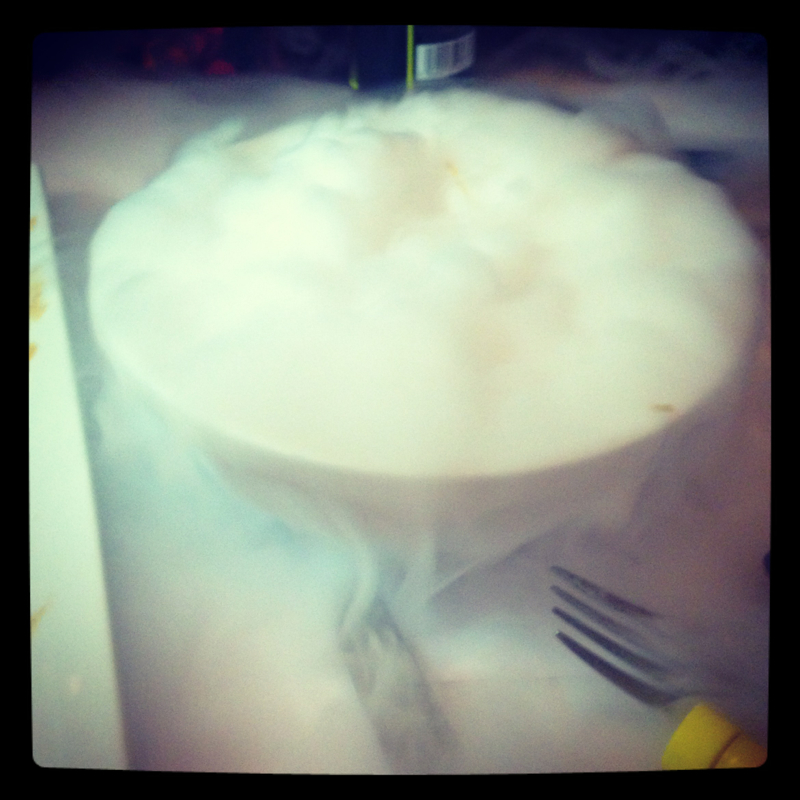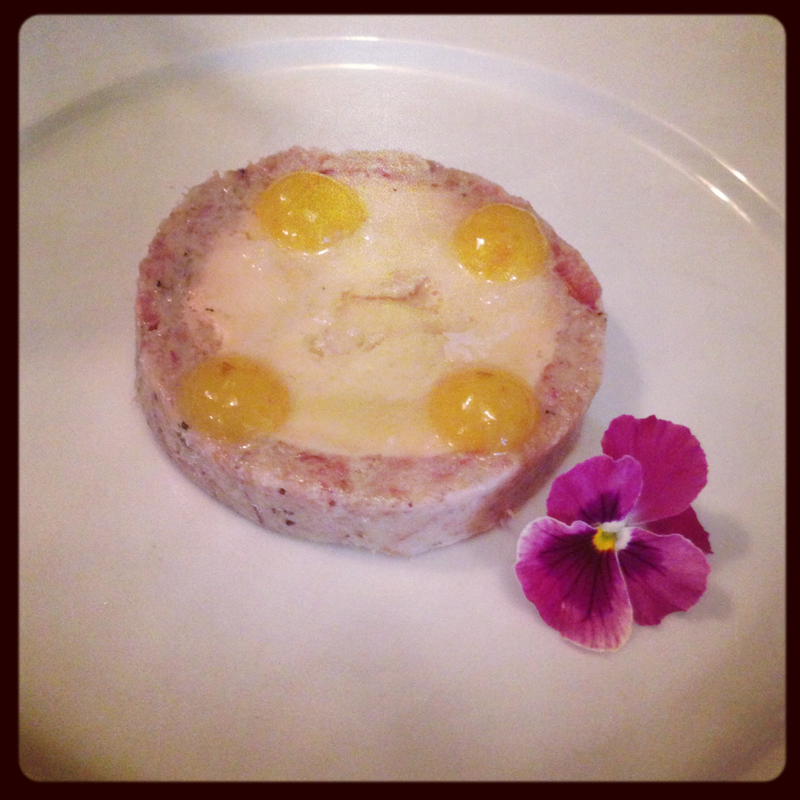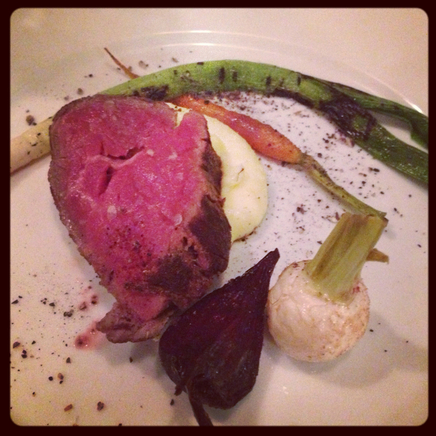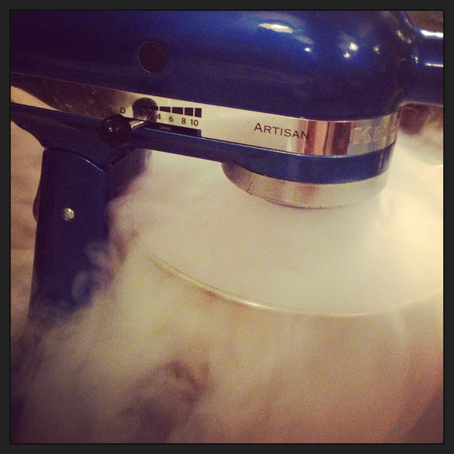At school I was always piss poor at Chemistry. The bloody hundreds of elements, with their peculiar properties, atoms, bonds and god-knows-what else bamboozled me and teenage Lucy, braces and a middle parting, looked nothing but alarming in goggles and a lab coat. In some crazy logic, comprehensible only to the pubescent hormonal mind, I took it on to A level so that I wouldn’t have to go on the mandatory Biology field trip to the Shetland Islands. Chemistry and Ancient Greek; a classic combination. Cutting a long, ionic story short, after high school I repelled it from my life and turned to food….
…only to discover that escape was not so easy. Molecular Gastronomy emerged transforming my homely pies and classic stews into smeared, charcoaled, distilled components mounted on plates and slates, unrecognisable to the traditional eye. It was distinctly confusing. ‘That’s not my Lemon Meringue Pie’, I balefully bleated, eying the acid neon blob on my plate, ‘that’s not what I ordered!’. ‘It burns’, I cried as my waiter squirted ‘essence of lemon’ into my face. ‘Just sod off’, as he approached with headphones playing ‘sounds of the lemon grove’.
Even worse, half the time it was horrid. Masters like Ferran Adria, Heston Blumenthal, born of classic backgrounds, had the skill and technique to do it – but ranks of fresher chefs rose up, purists of the molecular and put forth some truly vicious plates. Change was hard, molecular gastronomy was everywhere and, distressingly, my Lemon Meringue was nowhere.
But then chefs chilled out, foraging trended instead. The hype was over, the parts that I hated softened and a hybrid was formed. Classic flavours with the modern scientific techniques loved by molecular gastronauts. The food I loved came back, with quirks that kept me interested. My Lemon Meringue came back into its crust, but with a molten core and spherified limoncello.
Of these hybrids, the Gastronomy Guys in London I enjoy particularly. I recently attended a supper club by them at The Kitchen Club in Clerkenwell. Their cooking took the flavours I love and techniques I don’t understand and married them into plates both intriguing and delicious.
…only to discover that escape was not so easy. Molecular Gastronomy emerged transforming my homely pies and classic stews into smeared, charcoaled, distilled components mounted on plates and slates, unrecognisable to the traditional eye. It was distinctly confusing. ‘That’s not my Lemon Meringue Pie’, I balefully bleated, eying the acid neon blob on my plate, ‘that’s not what I ordered!’. ‘It burns’, I cried as my waiter squirted ‘essence of lemon’ into my face. ‘Just sod off’, as he approached with headphones playing ‘sounds of the lemon grove’.
Even worse, half the time it was horrid. Masters like Ferran Adria, Heston Blumenthal, born of classic backgrounds, had the skill and technique to do it – but ranks of fresher chefs rose up, purists of the molecular and put forth some truly vicious plates. Change was hard, molecular gastronomy was everywhere and, distressingly, my Lemon Meringue was nowhere.
But then chefs chilled out, foraging trended instead. The hype was over, the parts that I hated softened and a hybrid was formed. Classic flavours with the modern scientific techniques loved by molecular gastronauts. The food I loved came back, with quirks that kept me interested. My Lemon Meringue came back into its crust, but with a molten core and spherified limoncello.
Of these hybrids, the Gastronomy Guys in London I enjoy particularly. I recently attended a supper club by them at The Kitchen Club in Clerkenwell. Their cooking took the flavours I love and techniques I don’t understand and married them into plates both intriguing and delicious.
A starter of pressed watermelon with oyster leaf, salmon roe and silver leaf was delicate and flavoursome. Fresh, salty oysters with a cucumber foam – tastes that work so so well.
| Dinner rolls with butter and burnt butter – a strange powder on the side of the slab that added a bitter saltiness to the rolls, akin to those scrumptious bits of frazzled cheddar you scrape off the side of the toastie machine. A fresh broth of tomato, cucumber and almost ‘jellified’ tomato of three different kinds with cucumber flower. Dover sole in lobster bisque, alongside a ‘sea aroma’ that billowed fishy clouds of smoke over the table. |
Foie Gras terrine with pearls of white peach to cut through the fatty liver, cauliflower with truffle and orange (divided the room) and wagyu beef with that infamous charcoal which I commonly hate. Alongside such perfectly cooked sous-vide beef, I allowed it.
Even a bacon lollypop which I was semi-determined to detest, was in fact delicious. Bacon with sugar is no new thing – the Canadians have been covering theirs with maple syrup for years. All finished off with a watermelon sorbet frozen with liquid nitrogen in front of us. These techniques have merit, they have sense. The liquid nitrogen speeds up tenfold the freezing process and disallows the formation of gritty ice crystals, making a smoother ice-cream.
This is the food I like. This, for me, is beneficial chemistry. Far from the classroom tedium, the utter pointlessness of Heston-Adria wannabee plates of dust, dots and splatters. Gastronomy Guys, I approve.
www.oysterboys.co.uk/gastronomy-guys/
Catch them at Pop-Ups all over London.
www.oysterboys.co.uk/gastronomy-guys/
Catch them at Pop-Ups all over London.

